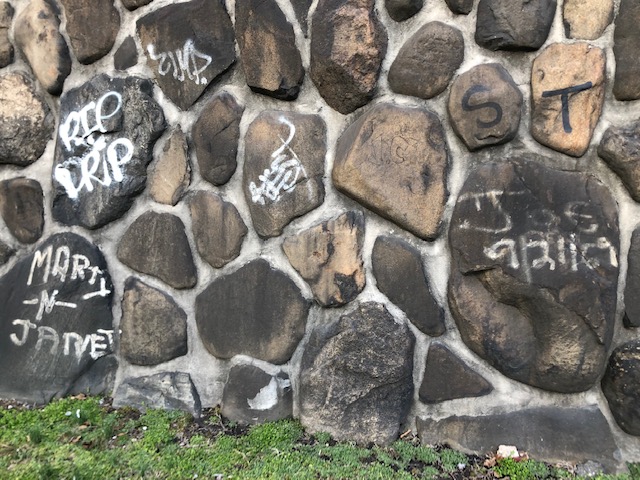The days are growing longer, however slowly. That's a sign of Spring approaching, even if the past week's weather has been colder than a month ago--or what I experienced when I arrived in Paris during the first week of January.
But I am happy to have enough daylight late in the afternoon that I can sneak in a ride after classes. So I took a spin down "Hipster Hook" from my apartment into Greenpoint and Williamsburg, and back through the still-bluecollar and industrial areas along the Brooklyn-Queens border.
.jpg)
Along the way, I stopped in what has to be one of the strangest, and in its own way, charming stores in New York. I thought the sign might have been a "leftover" from some previous owner: The lettering fonts and overall styles look like they're from the '50's, and delis, bodegas and the like no longer have to announce themselves as "self-service," as customers are accustomed to picking up what they want and paying for it. On the other hand, in France and other European countries in marketplaces and stores that aren't supermarkets, you ask the fruitier or fromagier or whoever is working there--who might be the proprietor--for what you want and they pick it out for you. That was still common in the US, or at least here in New York, when I was growing up.
Anyway, the reason why I call this store "charming" is that it is unlike any other I've seen here. It has all f the things you'll find in a deli or bodega, from coffee to cat litter. But it also has a hodgepodge of items you might find in a dollar, or any other thrift, store: small tools, housewares, stationery and the like.
If you go there, you'll probably encounter something like what I saw: Gnarled, dessicated and otherwise weathered old customers buying lottery tickets and brands of beer that, I thought, disappeared 40 years ago alongside hipsters and wannabes buying craft beers I hadn't heard of, organic hummus and light bulbs.
Oh, and the store includes something that was a veritable industry 20 to 30 years ago but is now as rare, and dated, as cuneiform: movie rentals. I don't know of any place in my neighborhood, or any place else in New York, that still offers this service. I don't plan to avail myself to it since I no longer have a functioning player, but it's interesting to know that such a service still exists. Best of all, there are gnarled, dessicated and otherwise weathered old customers buying lottery tickets and brands of beer that, I thought, disappeared 40 years ago alongside hipsters and wannabes buying craft beers I hadn't heard of, organic hummus and light bulbs.
Speaking of relics and artifacts: On the ride back, I encountered these:
Those graffitoes have graced the wall of Calvary Cemetery that faces, ironically, Review Avenue in an industrial area along Newtown Creek. I remember seeing them as a kid, when my family and I went to visit relatives nearby. (Calvary wasn't the only cemetery we passed. How did that affect my emotional development?) And I've seen them a number of times, usually from the saddle of my bicycle.I have wondered what those people were like (or if they were real!). Did Marty and Janet stay together--get married? Divorced? Did one of them "come out" in his or her 40's? And Joe? Sometimes I imagine a blue-collar Brooklyn or Queens guy, like an older brother of one of the kids I grew up with. Was he sent to Vietnam? Has he lived a long and happy, or a turbulent, life? For that matter, are Marty, Janet and Joe on the side of the wall from which I encountered their "tags?" Or are they on the other side?






.jpg)
.jpg)


























